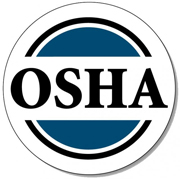Diesel Exhaust Scrubber Systems
Diesel Exhaust Purifier Scrubbers – Maintenance
Like other parts of exhaust conversion systems, proper maintenance and cleaning of diesel exhaust purifier scrubbers is not something to delay. Choosing to set up a cleaning schedule based on the number of hours the engine or equipment is in use and sticking to it will pay off in a number of different ways. Here are a few to keep in mind.
Choosing to provide maintenance to scrubber equipment is another way you ensure that the emissions from the exhaust system do not exceed the maximum amount set by local and national regulatory agencies. A scrubber that is cleaned regularly does a better job of converting carbon monoxide into harmless carbon dioxide, breaking down hydrocarbons, and in general, making sure the fumes that emerge from the equipment or vehicle pose no real threat to the environment. By staying well within the limits for emissions, you avoid heavy fines and penalties that would do some serious damage to your bank balance.
Another benefit of following a set schedule for cleaning the scrubbers has to do with prolonging the life of your exhaust system. Without regular cleaning of all the components - including the scrubbers - you are likely to lose out on several years of use. Given the amount of money you would end up spending on repairs and the eventual replacement, it makes sense to invest the time and effort needed to keep the scrubber free of any residue or buildup.
Day to day efficiency is something else to consider if you are thinking about making scrubber cleaning anything less than a priority. While the engine and the exhaust system may still work, you can bet that they will not function as well as before. Expect to see the fuel efficiency drop and the engine to take longer to start. You are also likely to notice that response is slower even when the engine continues to operate. By choosing to clean the scrubber, you can do away with all of these issues and once again enjoy the top level of performance.
Designing a schedule for scrubber cleaning is not that difficult. In many cases, you can work it in with other system maintenance. Consider the number of hours that the engine is operated every day. If the usage is somewhat sporadic or the equipment is only used for a few hours a day, consider setting up a schedule based on the calendar. It won’t take long to determine if a thorough cleaning for the scrubbers using the right exhaust cleaners should be done monthly, quarterly, or semi-annually.
CLEANING PROCEDURE FOR DIESEL EXHAUST PURIFIER SCRUBBER:
If the exhaust backpressure restriction measurement increases significantly over time the exhaust purifier core may require cleaning of accumulated diesel carbon. In typical use a diesel exhaust purifier scrubber will require regular cleaning every six to twelve months or every 500-1000 operating hours.
THE FOLLOWING BASIC PURIFIER CLEANING PROCEDURES ARE APPROVED FOR USE:
PROCEDURE “A” – Light Accumulation:
To clean light accumulations of diesel carbon deposits simply use a compressed air stream with a peak nozzle pressure of approximately 80 to 90 PSI. Use a rubber tipped nozzle and apply the airflow directly to the faces of the purifier core. It is advisable to wear an approved high quality dust mask or respirator (such as the Norton Model 100 or Siebe North Model 7700) and perform the cleaning procedure in a well ventilated area. Initially blow the compressed air into each cell of the purifier core inlet face until the face is clean. Clean the purifier core exit face.
PROCEDURE “B” – Heavy Accumulation:
To clean heavy accumulations of diesel carbon deposits put the purifier core into an oven capable of achieving a temperature of 1050° F (565° C). Use an air atmosphere and allow the purifier core to maintain this temperature for a period of 2 to 3 hours. Usually a ceramic kiln or heat treating oven (with temperature controls) will be suitable for this cleaning procedure.
PROCEDURE “C” – Heavy Accumulation:
An alternate method of cleaning heavy accumulations of diesel carbon deposits is to manually use solvents, compressed air and brushes. Firstly the inlet face of the purifier core is brushed clean with a nylon bristle paint brush or old toothbrush. Following inlet face brushing, compressed air is blown into the outlet face of the purifier. Repeat these steps until the purifier inlet face is clean. Completely submerge the purifier core into a can of super concentrated “gunk” brand cleaning solution for 1 hour. Remove the purifier core and place in hot water for one hour to ensure that there is no “gunk” solution left in the purifier core. Air dry the purifier core with compressed air to ensure the core is dry. Reinstall the purifier into the engine exhaust system.












































